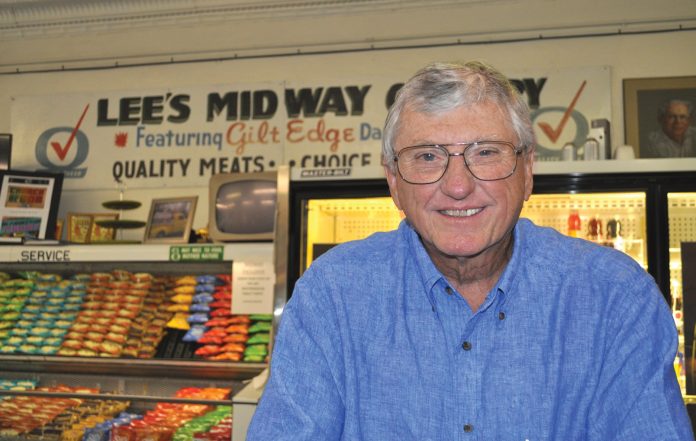
by Bobby Anderson, Staff Writer
Richard Bailey has spent his entire life in communication. Spanning Asia for the telecommunications industry and then working in the computer and internet industries, Bailey has always been focused on the best way to get a message across.
Retired since 2000, Bailey is now applying his talents as chairman to help the 21st Century Norman Seniors Association communicate their needs as the City of Norman prepares to build a new senior center.
Norman seniors have been watching intently as the city has wrestled with funding a new senior citizen.
For some, it’s been promises broken. For others, it’s simply been a long process that has the promise to unfold into not only a one-of-its kind center but a new wellness philosophy for Norman’s 25,000 seniors.
Welcoming seniors and “anyone who aspires to be a senior,” Bailey’s group is focused on not only seeing that Norman seniors have a place to call home but there’s a philosophy behind it that places value meeting ever-changing needs.
“I think (the value of seniors) is something that’s horribly overlooked,” Bailey said.
AN OLD CONCEPT
The first senior center built was in the 1940s in New York City. Built to provide leisure activities for primarily widows, the center allowed case workers a central location to reach the population.
About 30 years later the city of Norman moved its senior center into a 45-year-old Carnegie Library down the street from the county courthouse.
“And we’re still there,” Bailey said. “And we’re still basically operating under the same service concept that was developed in the 1940s.”
“The whole concept of senior centers has changed dramatically.”
Norman’s population has grown more than 50 percent to nearly 120,000 residents since 1990.
And the senior population is growing exponentially every day.
A NEW VISION
“Remember that every student at Norman North and Norman High School will be a senior citizen during the lifespan of this building so you have to think about not just the people who are there today but the people who will be there in the future,” Bailey said.
The building will be physical evidence the importance of Norman seniors has been recognized but Bailey says it’s about a concept that embraces senior wellness.
Norman’s current senior center has a half-hour wellness class once a day.
“The new concept is health and wellness on demand and has people there organized to help seniors get the best benefit out of the facilities that are there,” Bailey said. “It’s well-proven that the overall cost to society is reduced by spending money on senior activities to keep them healthy.”
The new concept embraces intergenerational activities. More and more high school and college students are seeing the benefit of spending more time with seniors.
“If you think really hard about it it could extend down to an organized latchkey operation for parents who needed it,” Bailey said.
The new concept also embraces volunteerism.
“The seniors that are there today are better educated, healthier and more involved in activities than ever before,” Bailey said. “And if you organize a set of services in the senior center around people who are willing to volunteer to do things you can get a tremendous number of people that will be active.”
And don’t forget about the ever-growing number of seniors or soon-to-be seniors who are serving as caregivers for their own parents.
Bailey has been through that experience.
“There should be an organized set of caregiver activities within a senior center so people can know they can go there and learn and understand from people who have been through it,” he said.
In March, the Wall Street Journal noted people over 65 years old would outnumber children by 2035, a first in U.S. history, according to updated projections released by the Census Bureau.
The milestone would be the latest marker of the nation’s aging, which has accelerated with baby boomers’ move into their senior years and recessionary effects on births and immigration over the past decade.
The growing elderly population will also put pressure on lawmakers to shift funding toward programs such as Medicare and Social Security, particularly because elderly Americans vote at high rates, said Kenneth M. Johnson, a demographer at the University of New Hampshire.
Norman’s senior center serves almost 150 seniors each week.
“We haven’t evolved our programs in our current vision enough to really meet the needs of a significant or even a small portion of the senior community,” Bailey said. “But the value of that senior community to the whole community is much greater than its use right now. It’s an overlooked resource.
You can find out more information online at www.normanseniors.org as well as the group’s Facebook page listed as Friends for a 21st Century Senior Citizen’s Center.













